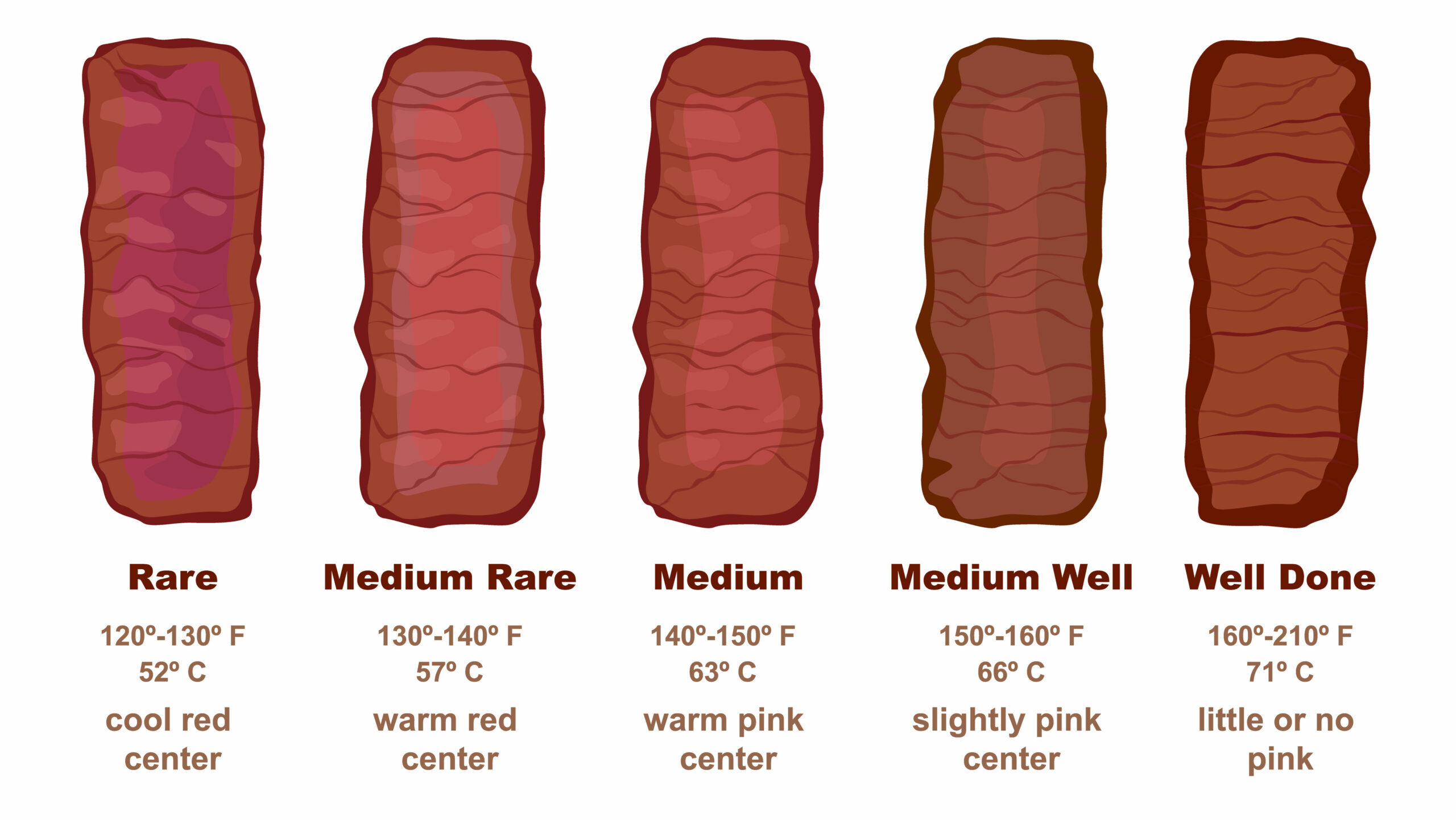For many, grilling and cooking meat conjures up images of backyard barbecues, smoky flavors, and perfectly cooked dishes. But achieving that ideal level of doneness can be a mystery, especially for new cooks. This guide dives into the world of safe and delicious cooking temperatures for various meats, ensuring you become a grilling guru in no time.
Safety First: Why Internal Temperatures Matter
Before we delve into the specifics, understanding why internal temperature is crucial is key. Raw meat can harbor harmful bacteria. Cooking to the proper internal temperature ensures these bacteria are destroyed, preventing foodborne illness. Always use a reliable food thermometer to measure internal temperature and avoid relying solely on appearance or cooking time.
The Heroes: Cooking Thermometers Explained
There are two main types of food thermometers: digital and instant-read. Digital thermometers provide continuous temperature readings, while instant-read thermometers offer a quick and accurate temperature check at a specific point. Both are effective, so choose the one that best suits your cooking style.
The Steaks Are High: Temperatures for Beef
Beef is a grilling favorite, offering a variety of cuts with distinct textures and flavors. Here’s a breakdown of safe cooking temperatures for different cuts:
- For steaks, roasts, and ground beef: The magic number is 145°F (63°C) for whole muscle cuts like ribeye, New York strip, and sirloin. Allow the meat to rest for 3 minutes after cooking for optimal tenderness and even distribution of juices. Ground beef, due to its increased surface area that can harbor bacteria, needs to reach a higher temperature of 160°F (71°C) to ensure safety.
- For rarer preferences: If you prefer your steaks rare (120°F / 49°C) or medium-rare (130°F / 54°C), it’s crucial to start with high-quality cuts from reputable sources to minimize the risk of bacterial contamination.
Pork: The Versatile Delight
Pork offers a range of cuts suitable for grilling, roasting, and more. Here’s a temperature guide for safe and delicious pork dishes:
- For whole muscle cuts like chops, roasts, and tenderloin: Similar to beef, these cuts reach safety at 145°F (63°C) with a recommended 3-minute rest.
- For ground pork: Ground pork follows the same principle as ground beef, requiring a higher internal temperature of 160°F (71°C) for safety.
Poultry Powerhouses: Chicken and Turkey
Chicken and turkey are popular choices for grilling, baking, and countless other dishes. Here’s how to ensure they are cooked through:
- For whole chicken, turkey, or any poultry parts: There’s no room for error here. All poultry, including breasts, thighs, wings, and drumsticks, require a safe internal temperature of 165°F (74°C).
The Treasures of the Sea: Cooking Fish
Fish offers a healthy and flavorful grilling option. Here’s how to know when it’s perfectly cooked:
- For most fish fillets and steaks: Fish is done when it reaches an internal temperature of 145°F (63°C). You can also check for doneness by looking for opaque flesh that flakes easily with a fork.
- For shellfish: When cooking shrimp, lobster, crab, and scallops, aim for an opaque, pearly white flesh.
Beyond the Numbers: Tips for Grilling Perfection
While internal temperature is paramount, a few additional tips can elevate your grilling game:
- Preheating the grill: Ensure your grill is preheated to medium-high heat (around 400°F / 204°C) before adding meat. This creates a nice sear on the outside while trapping juices inside.
- Indirect heat for larger cuts: For thicker cuts like roasts or whole chickens, consider indirect heat. This involves placing the meat on one side of the grill with the heat source on the opposite side. This allows for slower, more even cooking.
- Resting is key: After removing meat from the grill, let it rest for a few minutes. This allows the juices to redistribute throughout the meat, resulting in a more tender and flavorful experience.
Conclusion: Confidence Through Knowledge
By understanding safe cooking temperatures and using a reliable food thermometer, you can conquer the grill and other cooking methods with confidence. Experiment with different cuts, marinades, and techniques to discover your own grilling style. Remember, practice makes perfect, and soon you’ll be a grilling maestro, leaving your guests in awe of your culinary expertise

